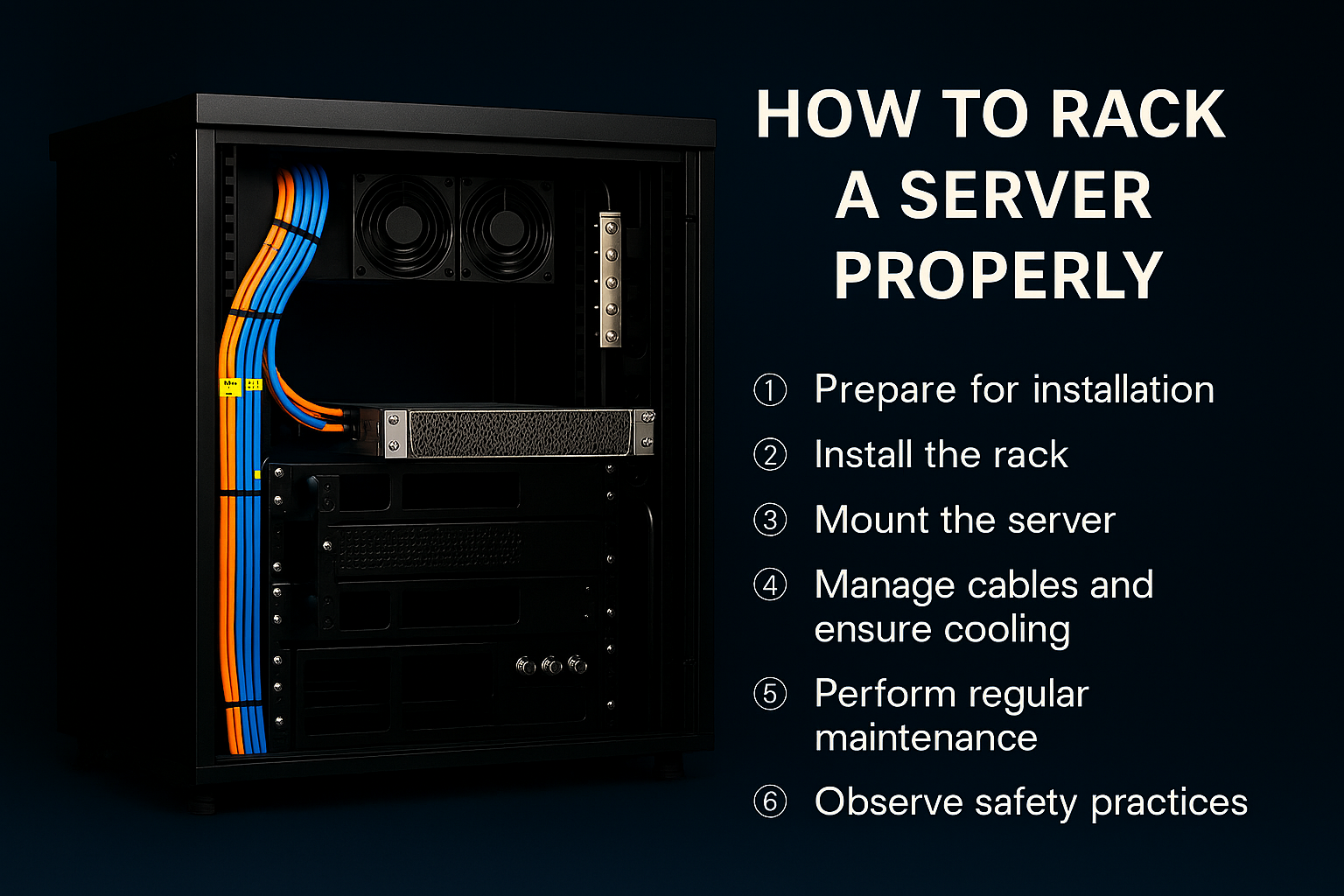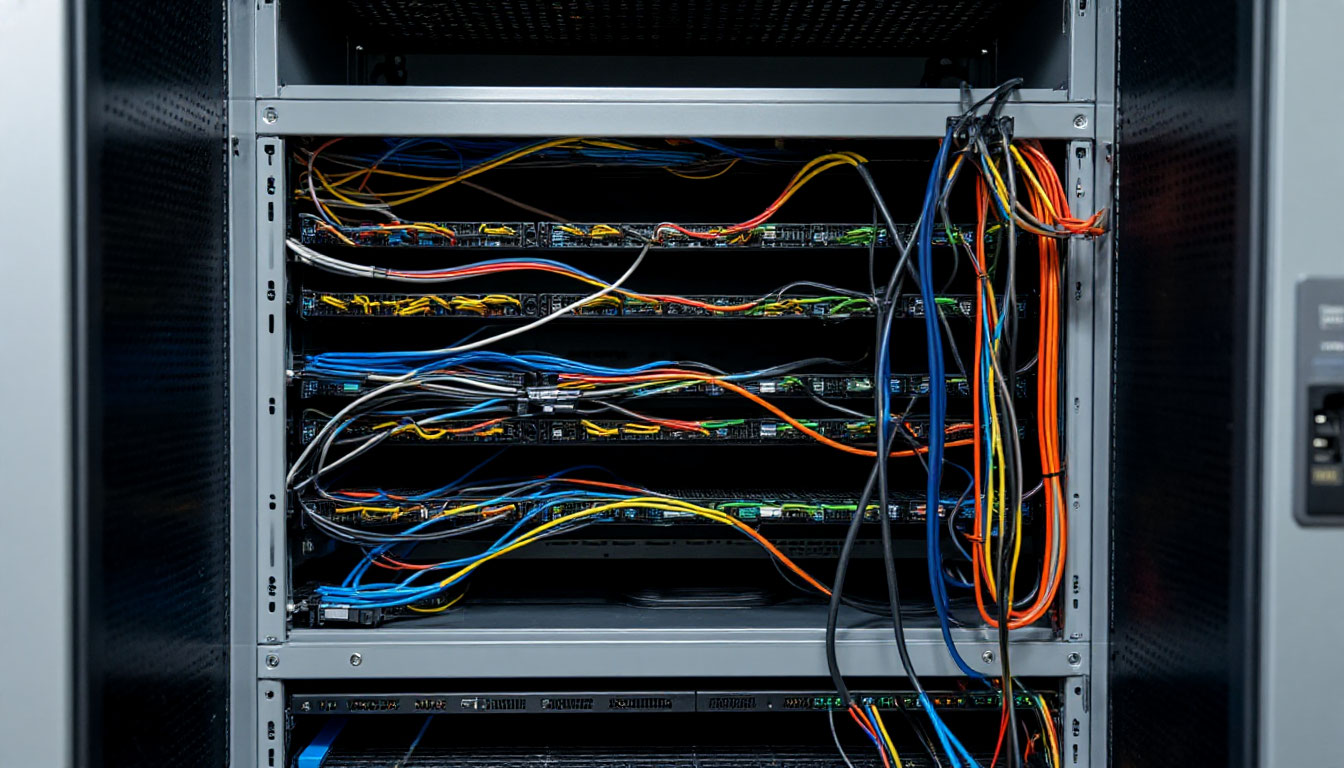Server moving and relocation guide

Server relocation is risky due to expensive equipment and potential data loss. Inexperienced movers can cause damage. To mitigate these risks and ensure a smooth transition, meticulous planning is essential. Here in the article we’ll discuss what you need to consider for a successful server rack relocation.
Server Moving Planning for Success
Moving a server to a new location hinges on thorough planning. Here’s what you need to consider to ensure a smooth transition:
1. Comprehensive Inventory:
- Create a detailed list of all equipment to be moved, including:
- Server models and quantities
- Network switches and routers
- Storage devices and their capacities
- Any peripheral equipment (e.g., KVM switches, PDUs)
- Include serial numbers and any specific notes about each piece of equipment.
- Clearly label each device with a corresponding identifier from your inventory list. This will streamline reinstallation at the new location.
2. Communication is Key:
- Establish open communication channels between your IT staff and the logistics company.
- IT Team Responsibilities:
- Provide the logistics company with a detailed inventory list and any special handling instructions for sensitive equipment.
- Coordinate with the movers to schedule a convenient relocation window that minimizes downtime.
- Prepare the server environment for relocation, including data backups and system shutdown procedures.
- Logistics Company Responsibilities:
- Discuss your specific needs and concerns with the logistics team.
- Clarify their packing, transportation, and security protocols.
- Ensure they have the necessary equipment and expertise to handle your server racks safely.
By creating a detailed inventory, establishing clear communication channels, and outlining responsibilities, you can lay the groundwork for a successful and stress-free server relocation.
The Relocation Process: A Step-by-Step Guide
The relocation process itself requires a meticulous approach to ensure the safety and security of your valuable server equipment. Here’s a breakdown of each step involved:
- Power Down and Secure Disconnection:
- Power Down: Safely shut down all network devices according to manufacturer recommendations. This may involve a staged approach to minimize disruption to ongoing operations.
- Methodical Disconnection: Carefully disconnect all power cables and data lines from each server and network device. Label each cable with its corresponding origin and destination for easier reconnection at the new location.
- Meticulous Cable Management:
- Fiber Optic and Network Cables: These delicate cables require special attention. Label each cable clearly with its origin and destination points. Bundle cables together securely using cable ties or straps to prevent tangles and potential damage during transport.
- Excess Cable Management: Coil any excess cable slack neatly and secure it to prevent strain on the connectors during transport.
- Secure Server Packing:
- Individualized Packing: Each server should be individually wrapped in protective anti-static bubble wrap or packing materials. This helps cushion the equipment against bumps and vibrations during transport.
- Filling the Gaps: Use packing peanuts or other void-fill materials to fill any empty spaces within the server packaging. This additional support minimizes internal movement and potential damage.
- Smaller Equipment: For smaller network devices and peripherals, use appropriately sized boxes with sufficient cushioning material. Clearly label each box with its contents for easy identification at the new location.
- Dismantling Racks for Safe Handling:
This step focuses on preparing the server racks for safe moving. Here’s what’s involved:
- Support Leg Removal: For server racks that are not designed for mobile transport, carefully dismantle the support legs to create a lower profile for easier maneuvering during the move.
- Secure Remaining Components: Use tape or cable ties to secure any loose components within the rack, such as shelves or power distribution units (PDUs), to prevent them from dislodging during transport. This ensures the stability of the remaining structure and protects the equipment.
- Professional Loading with Specialized Equipment:
- Trained Loaders: Experienced movers will utilize specialized lifting equipment like pallet jacks or server lifts to safely move the heavy server racks and equipment.
- Trolleys for Maneuvering: For smaller equipment or individual servers, specialized trolleys can be used to efficiently move them to the transport vehicle.
- Secure Transport: Minimizing Movement During Travel
- Straps and Anchors: Once loaded onto the vehicle, the movers will use straps, wedges, and other fastening systems to secure the equipment firmly in place. This minimizes any movement during transport and prevents potential damage.
- Careful Delivery and Unloading:
- Reverse the Loading Process: Upon arrival at the new location, the movers will carefully unload the equipment using the same specialized equipment employed during loading.
- Safe Transport to Final Location: The servers and racks will be carefully moved to their designated spots within the new server room.
- Rack and Server Installation:
- Rack Reassembly: Reassemble the server racks, ensuring proper alignment and stability.
- Equipment Installation: Carefully install each server and network device back into its designated slot within the rack.
- Power Reconnection: Reconnect all power and data cables according to your pre-labeled scheme.
- System Startup and Verification:
- Power On and System Boot: Power on each server and network device following the established sequence.
- Functionality Verification: Once booted up, IT staff should verify the functionality of each server and network device to ensure a smooth transition to the new environment.
Why Professional Transport Matters
- Equipment Sensitivity: Server equipment is sensitive to vibrations and impacts. Professional movers ensure safe handling.
- Specialized Tools: Logistics companies use platforms, lifts, manipulators, and cranes for efficient and safe loading/unloading.
- Suitable Vehicles: Trucks used for server relocations have features to minimize jolts during transport.
- Route Planning: Logistics experts plan routes that minimize bumps and vibrations.
Additional Considerations
- High-Quality Packaging: Essential to protect equipment during transport.
- Climate Control: Maintain a stable temperature and humidity throughout the move.
- Cargo Insurance: Consider insurance for added peace of mind.
- Experienced Team: A professional team works efficiently to handle your equipment safely.
- Formal Contracts: Ensure data security and accountability with carrier contracts.
The Cost of Server Relocation
The cost depends on several factors:
- Number of Units: Quantity of equipment being moved.
- Equipment Size/Weight: Dimensions and weight of servers and racks.
- Distance: The distance between locations.
- Vehicle Requirements: The type of truck needed and its features for securing equipment.
- Move Complexity: Special considerations like moving equipment from upper floors or through windows.
- Declared Cargo Value: The declared value of your equipment for insurance purposes.
A professional logistics company will analyze these factors to provide an accurate estimate upfront.
Conclusion
Moving your servers to a new location, while necessary, can be a risky endeavor. Data loss and equipment damage are constant threats. However, with meticulous planning and a professional logistics partner experienced in server relocation, you can navigate this process with confidence. By prioritizing planning and partnering with the right logistics company, you can transform a potentially stressful move into a streamlined success.




